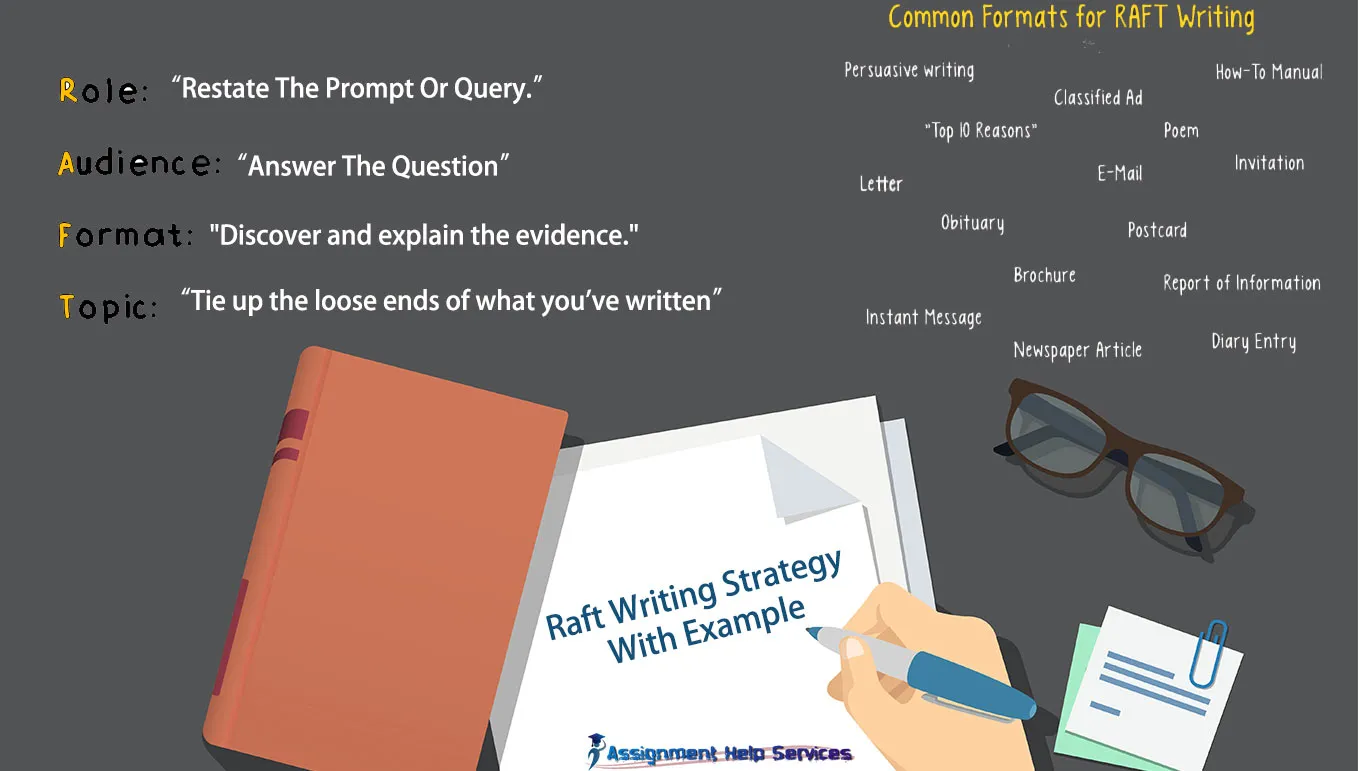Raft Writing Strategy With Example
RAFTS (Role, Audience, Format, Topic, Strong verb) is a writing method that encourages students to consider their role as writers, the audience they will address, various writing forms, and the topic they will write about.

How to use RAFT in writing:
- On the overhead projector, show a completed RAFT example.
- Use simple examples to describe each of these: role, audience, format, and topic...
- Demonstrate how to compose responses to the prompts and have a class discussion about the main elements.
- Have students practise responding to prompts in small groups or individually..
Why to use RAFT:
- It comprises writing from a variety of perspectives.
- It assists pupils in developing crucial writing abilities like audience, primary theme, and organisation.
- It encourages pupils to think about writing in new ways by asking them to react to the following prompts:
- Writer's Role: Who or what are you as a writer? a pilgrim? A soldier? The President?
- Audience: To whom are you addressing your writing? A friend? teacher? newspaper reader?
- Format: What is the format in which you are writing? Is it a letter? Is it a poem? A speech?
- Topic with a powerful verb: What exactly is it that you're writing about? Why? What's the point or what's the subject?
- It can be utilised in a variety of assignment content areas.
RAFT Strategy
- The more frequently students write, the better writers they become.
- RAFT is a writing method that teaches students how to recognise their function as writers and how to successfully communicate their ideas and mission to the reader so that everything written is easily understood.
- RAFT also assists students in focusing on the audience they will target, the various writing formats, and the topic they will be writing about.
- Teachers can use this method to inspire students to write creatively, think about a topic from numerous angles, and write for a variety of audiences.
- Deborah Dean notes in her book Strategic Writing that writing for diverse objectives and audiences may necessitate the use of different genres, information, and tactics.
RAFT Paragraph
Scholars are attempting to improve their writing by including more evidence and clarifying it.
The RAFT format aids them in this endeavour.
R stands for "Restate The Prompt Or Query."
A is for Answer The Question.
F stands for "discover and explain the evidence."
T is tie up the loose ends of what you've written.
RAFT writing prompts
Santa, Havens, and Valdes established the RAFT (Role, Audience, Format, Topic) writing method to assist students understand their role as writers and convey their ideas clearly by creating a sense of audience and purpose in their writing.
RAFT Education:
It teaches pupils how to think about key themes when writing or reading a text.
RAFT stands for Role, Audience, Format, and Topic.
Why should you utilise the RAFT strategy?
This technique is referred to be a "complete/one-stop" strategy because it addresses the most significant writing concepts.
Use of RAFT strategy with example:
Explain each prompt with examples.
For example, using the RAFT technique, select a section from The Tempe stand and ask your students to complete a writing project based on that prompts.
Students can now follow the prompts to help them write in a more creative manner.
When the pupils have finished, they can read what they have written to the rest of the class.
This will display all of the students' various stories.
This helps them to understand the literature they're reading while also allowing them to practise creative writing.




